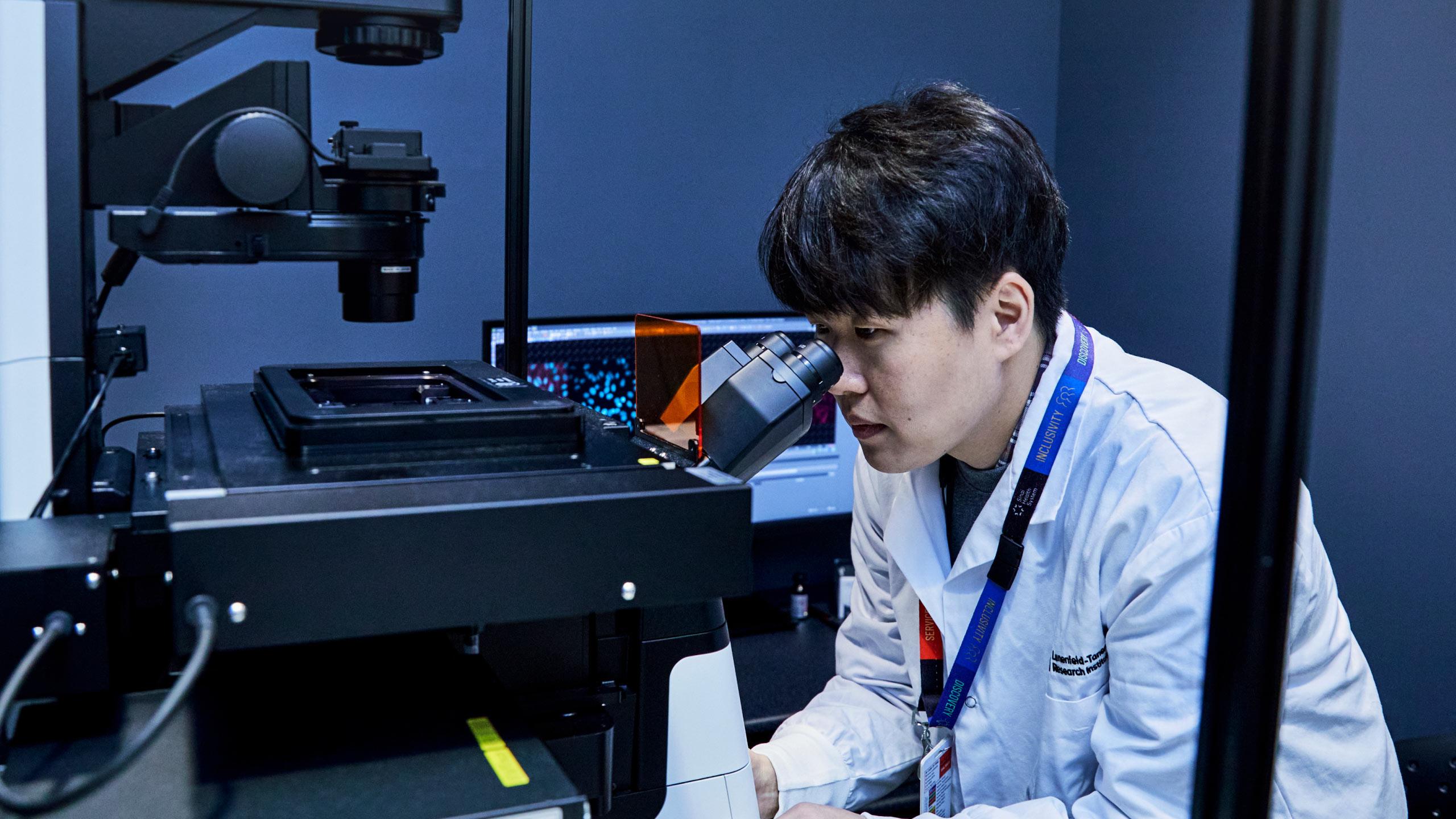Breast Cancers
Learn more about breast cancers and how they are treated.
Overview
Breast cancer can start in different parts of the breast. It can also spread to areas outside the breast through blood vessels and lymph vessels.
When breast cancer spreads to other parts of the body this is called metastasis.
There are many different factors that contribute to cancer risk, such as environmental exposures and lifestyle factors. Some people are carriers of a genetic mutation than causes a higher risk of breast cancer.
Depending on your medical and family history, we may offer genetic counselling to determine if you are eligible for high-risk screening or genetic testing.
Types of breast cancer
Invasive ductal carcinoma and invasive lobular carcinoma are the most common types of breast cancer.
There are several other less common kinds of breast cancer, such as Paget’s disease, external medullary, mucinous, and inflammatory breast cancer.
Invasive ductal carcinoma
Invasive ductal carcinoma starts in the ducts in your breasts. It then grows into other parts of the breast tissue. Invasive cancer cells can also spread to other parts of the body.
Invasive lobular carcinoma
Invasive lobular carcinoma starts in the lobules, which are the glands that produce breast milk. It then spreads to the nearby breast tissue. From there, it may also spread to other parts of the body.
Ductal carcinoma in situ (DCIS)
Ductal carcinoma in situ (DCIS) is a breast disease that may lead to breast cancer. In patients with DCIS, cancer cells are only in the lining of the ducts, and have not spread to other tissues in the breast.
Breast cancer diagnosis
There are several tests used to diagnose breast cancer. More than one test (or other tests that are not listed) may be needed to make an accurate diagnosis.
Breast exam
During a breast exam, a physician checks both breasts and the lymph nodes in and around your armpit, feeling for any lumps or other abnormalities. Breast cancer cells usually form a tumour that can be seen on an X-ray or felt as a lump.
Mammogram
A mammogram is an X-ray of the breast. It can help detect breast cancer in patients who do not have any symptoms. Mammograms can also help physicians get a closer look at a lump in the breast.
Breast ultrasound
A breast ultrasound uses sound waves to produce images of structures deep within the body. This helps physicians see if there are any abnormalities.
Breast magnetic resonance imaging (MRI)
An MRI machine uses a magnet and radio waves to create pictures of the inside of your breast. This helps physicians see if there are any abnormalities.
Biopsy
When an imaging test suggests that cancer is present, a biopsy is needed to make a definite diagnosis.
During a biopsy, a physician removes a small amount of tissue so it can be examined under a microscope and analyzed by a pathologist.
A pathologist is a physician who specializes in interpreting laboratory tests and evaluating cells, tissues, and organs to diagnose disease.
Cancer staging
If cancer is found, the next step is determining the stage of cancer. Knowing the stage of your cancer helps your care team develop your treatment plan. Physician determine the stage of your cancer based on the size and location of the tumour, whether cancer cells are in the lymph nodes and whether there are cancer cells in other parts of the body.
Breast cancer treatment
If you have been diagnosed with breast cancer, your cancer care team will discuss your treatment options and help you weigh the benefits of each treatment option against the possible risks and side effects.
Surgery
Most patients with breast cancer have surgery as part of their care plan. The surgeon may remove only the lump (lumpectomy) or the whole breast (mastectomy). The surgeon may also remove some of the underarm lymph nodes if necessary. Learn more about our breast surgical services.
Medical oncology
Medical oncology treats cancer with medications that affect the whole body. This includes chemotherapy, hormone therapy and targeted therapy.
Chemotherapy
Chemotherapy and hormone therapy are used to reduce the risk of the cancer spreading (adjuvant therapy) or to prolong survival when cancer has already spread elsewhere in the body (metastasized).
Most patients are referred for chemotherapy after having surgery for breast cancer. In some cases, you may see a medical oncologist before having surgery.
Hormone therapy
If you receive hormone therapy, you take medications to change the levels of certain hormones in your body. These changes to hormone levels can help slow down the growth of the tumour.
This treatment is often used to treat hormone receptor-positive breast cancers, which are cancers that respond to hormones. Post-menopausal women receive different hormonal therapy drugs than premenopausal women.
Targeted therapy
Immunotherapy, also called biologic therapy, is a treatment that uses your immune system to fight the cancer. Your cancer cells may produce proteins that prevent the immune system from attacking them. Immunotherapy medications interfere with that process to target, improve or restore the functioning of your immune system.
This treatment may be given alone or in combination with chemotherapy, hormonal therapy or both.
Radiation therapy
In many cases, radiation therapy is part of the treatment plan after breast-conserving surgery. In some cases, you may also receive radiation therapy after a mastectomy. It is also used to treat breast cancer that has spread to the bones, lungs or brain.
Clinical trials
Some patients may be able to participate in a research study that helps physicians and researchers find ways to improve treatments and quality of life for patients living with breast cancer.







